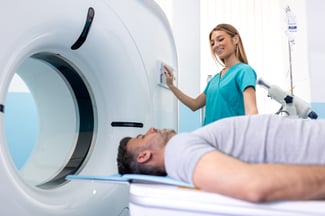 Fire protection and life safety is important for any business and industry, but some pose more challenges than others. When it comes to health care and hospitals, there are highly unique circumstances to consider.
Fire protection and life safety is important for any business and industry, but some pose more challenges than others. When it comes to health care and hospitals, there are highly unique circumstances to consider.
For example, hospitals often feature patients who may be immobile or critically ill – people who cannot self-evacuate in the case of a fire. Along with that, health care facilities often are host to many different types of chemicals or flammable gases like oxygen. And, this industry also uses a wide array of complex – and expensive – equipment that needs protecting, too, in case of a fire.
With all of this in mind, today we’re discussing three key differentiators that make fire safety in the health care industry such an important consideration.
1. The People
Of course, whenever there’s a fire safety risk, the most important consideration is keeping everyone safe. In a hospital, this can be a unique challenge depending on the status of the patients.
Hospital staff need to create an evacuation plan that accounts for patients who may be immobile or limited in mobility, and they need to consider evacuation without the use of elevators, too. Firewalls also need to be properly used to separate various parts of the hospital, buying time for everyone to evacuate by slowing the spread of the fire.
Once a plan has been established, it’s important to practice it with all staff, so everyone knows exactly what to do in case of emergency.
2. The Equipment
Hospitals and other health care facilities have equipment rarely seen in other industries. This could include compressed gas hookups or gas canisters, x-ray machines or surgical equipment, and more. These can all pose distinct fire safety risks, and they can also be very expensive to replace if damaged by a fire or by the agents used to put out a fire.
For this reason, it’s important to take equipment into account when choosing a fire suppression system. Some chemicals are less harmful on delicate machines than others. Working with a professional organization like CertaSite can help ensure that you have the best fire protection possible, while also protecting your equipment from damage if a fire or other emergency does occur.
3. The Diverse Facilities
 Another challenge to creating a fire protection plan for a health care facility can be the diversity that exists within the same location. While some areas might be fine with a water sprinkler system – such as waiting rooms or lobbies – other areas might need very specific fire suppression due to the presence of chemicals or various equipment types. Some areas might be more likely to have fires than others, due to the nature of what’s stored in different locations. Additionally, it can be easy to let exits or entries become blocked or cluttered with various supplies.
Another challenge to creating a fire protection plan for a health care facility can be the diversity that exists within the same location. While some areas might be fine with a water sprinkler system – such as waiting rooms or lobbies – other areas might need very specific fire suppression due to the presence of chemicals or various equipment types. Some areas might be more likely to have fires than others, due to the nature of what’s stored in different locations. Additionally, it can be easy to let exits or entries become blocked or cluttered with various supplies.
Some of the most common deficiencies we see in health care facilities are improper electrical distribution, improperly stored gas cannisters, and blocked emergency exits. This is because of all the unique needs that a hospital or other health care facility poses. It’s important to consider all of these challenges when creating a fire protection and life safety system to ensure that every area is protected appropriately.
At CertaSite, we know fire protection and life safety – it’s all we think about. And we know that there are very specific challenges and considerations when it comes to fire safety in a health care setting. We would love to work with you on creating a system that works for your unique needs.






